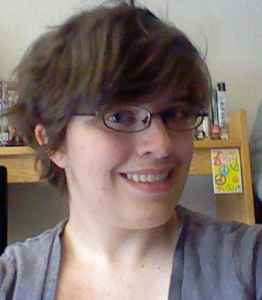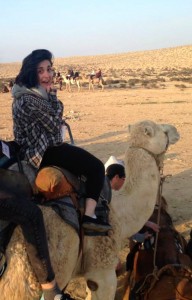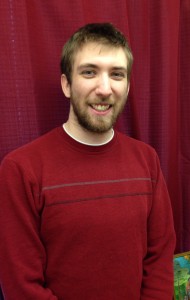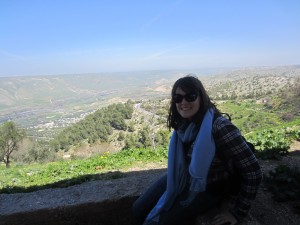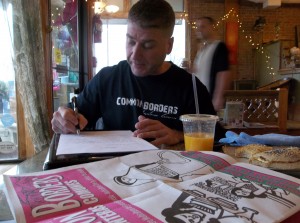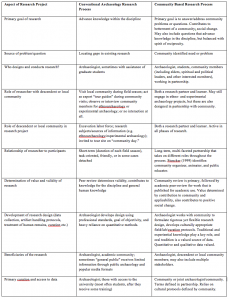By Sarah Welch
UMass Public Anthropology Course | Anthro 397D
Spring 2014
“Fabs, I’m not going to talk about anthro this weekend.”
“What? As if, Sarah!”
We were on an early-morning PVTA 38 bus to Hampshire College, en route to the Five College Queer Gender and Sexuality Conference Unsurprisingly, this is a conversation that Fabs, a nonbinary English-and-women’s-and-gender-studies-immersed close friend of mine, have a lot. It always takes the same pattern: “I’m going to turn off the anthropology switch, Fabs.” “Yeah, right.” “Excuse you, I have a sense of self-control!”
Flash forward to me inciting a discussion with unsuspecting strangers attending a panel on DIY riot grrl social justice about the problems with imperialism and moral relativism in ethnography: Maybe Fabs was right.
So I can’t ever stop thinking about anthropology: What gives? Maybe it’s not such a bad thing. Anthropology is the study of humans, so on some level it must be relevant to everyone. As anthropology informs my outlook on the world (and what I talk about at queer conferences), so does my environment affect how I do anthropology. Workshop spaces—gatherings of people who discuss and hold activities on a certain topic—have recently been where I have felt the relevance of anthropology the most.
Specifically, three instances in the past month have been fertile ground for the intersection of anthropology and my own personal life: the conference at Hampshire, an informal brown-bag discussion in the Engaged Anthropology Lab and Hampshire College student Lisa Profeta’s Division III workshop project. While only one of these events was specifically related to my field of study, each one provided its participants with opportunities to make aspects of their personal narrative a compelling part of the experience. Examples included my (entirely relevant, I swear) discussion about ethnography at the queer conference, one professor at the anthro brown bag who related a story of her encounter with racism online, and the Hampshire student workshop facilitator who explained how her experience with working in jails informed her own personal politics. Each of these deeply personal conversations was a result of the space provided for us: one that was collaborative and encouraging of healthy discourse among all present. In that way, we utilized the physical space as a medium for sharing, listening, and learning.
These collaborative spaces put into action the key point of what I have been learning about in anthropology this semester: nothing can exist in a vacuum. The field of anthropology is often one that is confined to academic spaces: commonly, professors and researchers extracting knowledge and artifacts from indigenous societies to bring them back to a Western institution. So far in 2014, my learning in the subject has been related to challenging those forms of scholarship rooted in imperialism and moving towards more engaged forms of research. Essentially, treating non-academic people as colleagues rather than subjects is key to ethical research that breaks down colonialist standards.
While informal chats about Twitter with professors and grad students in the anthropology lab might not constitute a research study, the ethics of listening to others and acknowledging that a position of power does not mean it should be used to exploit were still at the forefront of our goals. An important component of the queer conference and the Division III workshop, run by Hampshire senior Lisa Piefeta, was the construction of a set of ground rules suggested by the participants. Popular phrases included “Don’t yuck my yum,” meaning, “Respect others’ personal values and choices even if you don’t share them,” and “Ouch/oops,” a way of gently letting someone know that their words may have been harmful or offensive. Also key to kicking off the event was each participant sharing their name and preferred pronouns, thereby establishing a safe space for people of all gender identities.
Most important about these self-governing ground rules and expectations was that they were all mutually agreed upon, meaning that all participants had a personal stake in ensuring a safe and supportive climate for sensitive discussions. Racism, misogyny, trans- and queerphobia, and even insensitivity have no place anywhere, especially close-contact workshops, but as instances permeated by them are inevitable, it is useful to have the language for swiftly combating them. This technique of laying down a code of conduct, while perhaps unnecessary to instate formally for something as short as a one-hour anthopology-themed Twitter clinic, it is vital to ensure that any collaborative space is also a safe space.
Once the safe space is established, the physical space can take any form. In the case of the gender and sexuality conference, it took the shape of a two-day string of guest speakers, discussions, craft activities, and panels of experts on queer issues. Most importantly for me, it was defined by the opportunity for solidarity among members of the LGBTQAIP community, who are so often devalued, abused, or entirely erased from mainstream culture. Knowing that all of the people present were a part of the community which I am usually not physically a part of was incredibly empowering. While there, I felt safe to attend events such as “DIY Social Justice” and activist Robyn Och’s presentation “Real People are Complicated” and speak frankly about my opinions and share experiences, while also tuning in to the other stories people were sharing.
Who I am is crucial to what I do: I can bring a queer, feminist perspective to anthropology that is unique to me. Simultaneously, what I do is crucial to who I am: by meeting people in on-the-ground, meaningful, engaged spaces, I both receive and contribute to a well-rounded, intersectional braiding of experiences. Anthropology is as important to me as I am important to it.
Does that justify me talking my friends’ ears off about my latest readings on techniques of ethnography? As long as I listen to what they’re sharing with me, I say definitely.

